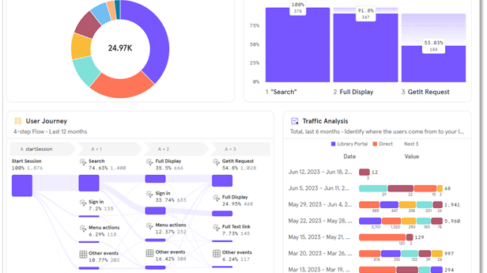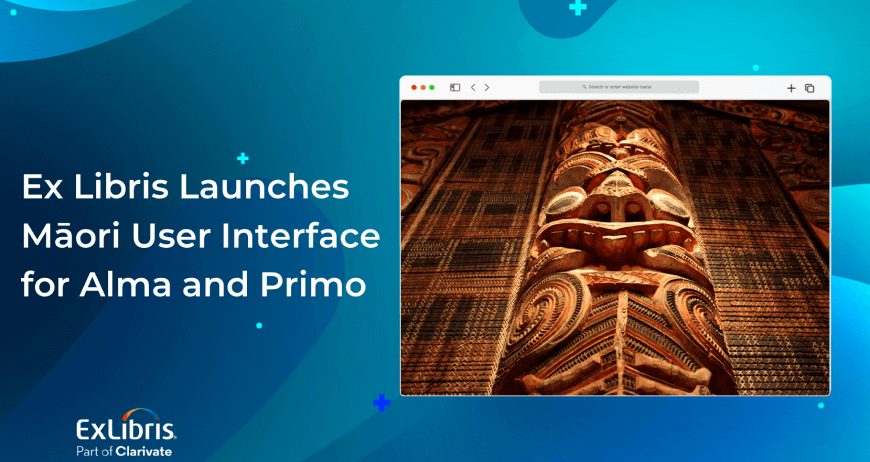Miri Botzer, Product Manager, Discovery and Delivery, Ex Libris
User experience (UX) is high on libraries’ agenda. The topic seems to generate interest among both librarians and faculty members as they try to figure out what it takes to increase student engagement, effectively support students in achieving their academic goals, and, as a desired side effect, increase the use and value of library collections.
UX includes all aspects of users’ interaction with an application—in our case, an application provided by a library. One of the key aspects of UX is the way in which users interact with library applications via the user interface (UI). The decisions made during the design of a UI directly affect the user experience. For example, consistent design leads to repeatable and more intuitive workflows for users, increase the chances that users’ discovery activity will be successful, and raise user satisfaction.
During the Charleston conference in November 2015, I had the privilege of presenting the approach behind the UX work that Ex Libris recently carried out and the outcome of that work: the new user interface of the Ex Libris Primo® discovery and delivery solution (the session was co-presented with Lea Currie, Head of Content Development, University of Kansas ; Julie Petr, Associate Librarian for Graduate Initiatives, University of Kansas ; and Kate Montgomery, Head of Electronic Resources Management, Tulane University).
This post is the first one in a series in which I will discuss various aspects of UX design and key principles for planning online library services. The series will include some real-life examples from the UI of the upcoming Primo release.
For a more detailed discussion of developing a UX for library applications, see our white paper Delivering the Experience That Users Expect: Core Principles for Designing Library Discovery Services.
Understanding Users’ Needs
UI design is not about colors, fonts, and buttons. Rather, it is about how to provide users with the best tools for achieving their goals. Obviously, to help users, you must first understand who they are, what their needs are, and what goals they have set for themselves.
Therefore, when we at Ex Libris undertook the Primo UX project, our first step was to conduct extensive research into users’ information-seeking behavior. Our goal was to determine who the main user personas are, pinpoint some of the recurring aspects of their searches, and identify significant characteristics of discovery. The findings of this research are summarized in the Ex Libris white paperHow Do Users Search and Discover.
Four key aspects of discovery emerged from the study:
- Search and find: Users search in a variety of ways and expect rapid delivery of the most relevant results.
- Exploration: Recommendations, navigation trails, and browsing lead to serendipitous discovery of relevant resources.
- Learning: Searching and exploration enable users to acquire new knowledge and deepen their understanding of research areas.
- Personalization: Search results that are tailored to a user’s profile and preferences are the best matches for the user’s query.
Core Principles
After you gain an understanding of users’ needs, the next step is to define the guiding principles of your design. Then, at each stage of the project, you can verify that the decisions you make are aligned with those principles.
As a result of our work on the new Primo UI, discussions with customers, and consultation with market experts, we identified five core principles that we believe are essential to the success of every UX project.
Principle 1: One Experience across Devices
The increasing preference of users for mobile devices is driving change in the design of applications and services. To satisfy users’ expectations, developers must create content, applications, and services that can be viewed and used seamlessly on multiple devices and provide a similar experience on all of them.
Principle 2: Intuitive Design
A successful interface enables users to easily understand what is in front of them and what the available options are. To achieve these goals, a UI must display a clean, clear, and intuitive design, which will streamline navigation and decrease a user’s need for explanations.
One of the key aspects of a UI is what we call glanceability—a quality that enables users to grasp all the essential information on a screen at a glance. Developers must determine which functions are relevant for the next step and avoid overloading the screen with less important information and options.
Principle 3: Action-Oriented Design
Applications that have an action-oriented design show only the options relevant to the next step, making navigation easier for users and providing quicker results. Creating such a design calls for an understanding of the user personas defined in user studies and typical search scenarios.< o:p>
Speed is a crucial element in action-oriented design. We are all becoming more and more impatient. We want to perform fewer actions and obtain quicker results. Therefore, designers must put key functions into a prominent position on the screen.
Principle 4: Personalization
Google, Amazon, and other types of services have gotten us used to accessing information and services that are specific to our needs. The design of an application, even a library application, should make users feel that it is tailored just for them, suggesting the best matches for the particular query and showing action options that are based on a specific user’s profile, the user’s previous selections, and even the user’s location.
Personalization can be achieved through selections made by the user (”active” personalization) and also through the application’s anticipation of a user’s intent (“passive” personalization), based on the tracking of patterns of activity. For further discussion on what personalization means for libraries, see Christine Stohn’s blog post “How Users Search and Discover: Personalization and Anticipatory Discovery.”
Principle 5: Serendipity
Some of the most exciting experiences in my university career were the discovery of fascinating information at the library just by chance. Such serendipitous discovery helps users extend their research scope to related information and thus expand their understanding of a topic.
A popular way of arriving at serendipitous discovery is by following recommendations (“users interested in this item also expressed an interest in the following items”). Such recommendations enable users to benefit from selections made by other users and the wisdom of the crowd.
Applying UX Principles to Library Discovery
In the next blog post, I will explain how the five principles described here can be applied to library discovery services. In the meantime, feel free to leave a comment or send me your feedback.
For more information, download our white paper: Delivering the Experience That Users Expect: Core Principles for Designing Library Discovery Services.
You might also be interested in

Alma
Content
Primo
Artificial Intelligence
December 18, 2024 |
4 min read
Artificial Intelligence Blog Series: Harnessing Academic AI – Insights from Clarivate

Alma
Leganto
Primo
Artificial Intelligence
October 26, 2024 |
3 min read
Artificial Intelligence Blog Series: Meet Knowledge Assistant, Your Guide to the Ex Libris Knowledge Center

Primo
Artificial Intelligence
Higher Education
Research
September 23, 2024 |
4 min read
Elevate User Engagement with Advanced Analytics: Ex Libris Primo Partners with Mixpanel
Great library experiences start with software
Download whitepaper

Primo
Artificial Intelligence
Higher Education
Research
June 19, 2024 |
4 min read
Artificial Intelligence Blog Series: Meet Primo Research Assistant

Primo
January 30, 2024 |
3 min read
Revolutionizing Library Discovery: The Journey to a New UX for Primo Discovery

Primo
Artificial Intelligence
November 23, 2023 |
4 min read
Artificial Intelligence Blog Series: Prioritizing Conversational Discovery at Ex Libris

Alma
Leganto
Primo
Rapido
October 29, 2023 |
4 min read
Why academic libraries are modernizing the user experience

Alma
Primo
July 28, 2022 |
3 min read
Ex Libris Launches Māori User Interface for Alma and Primo

